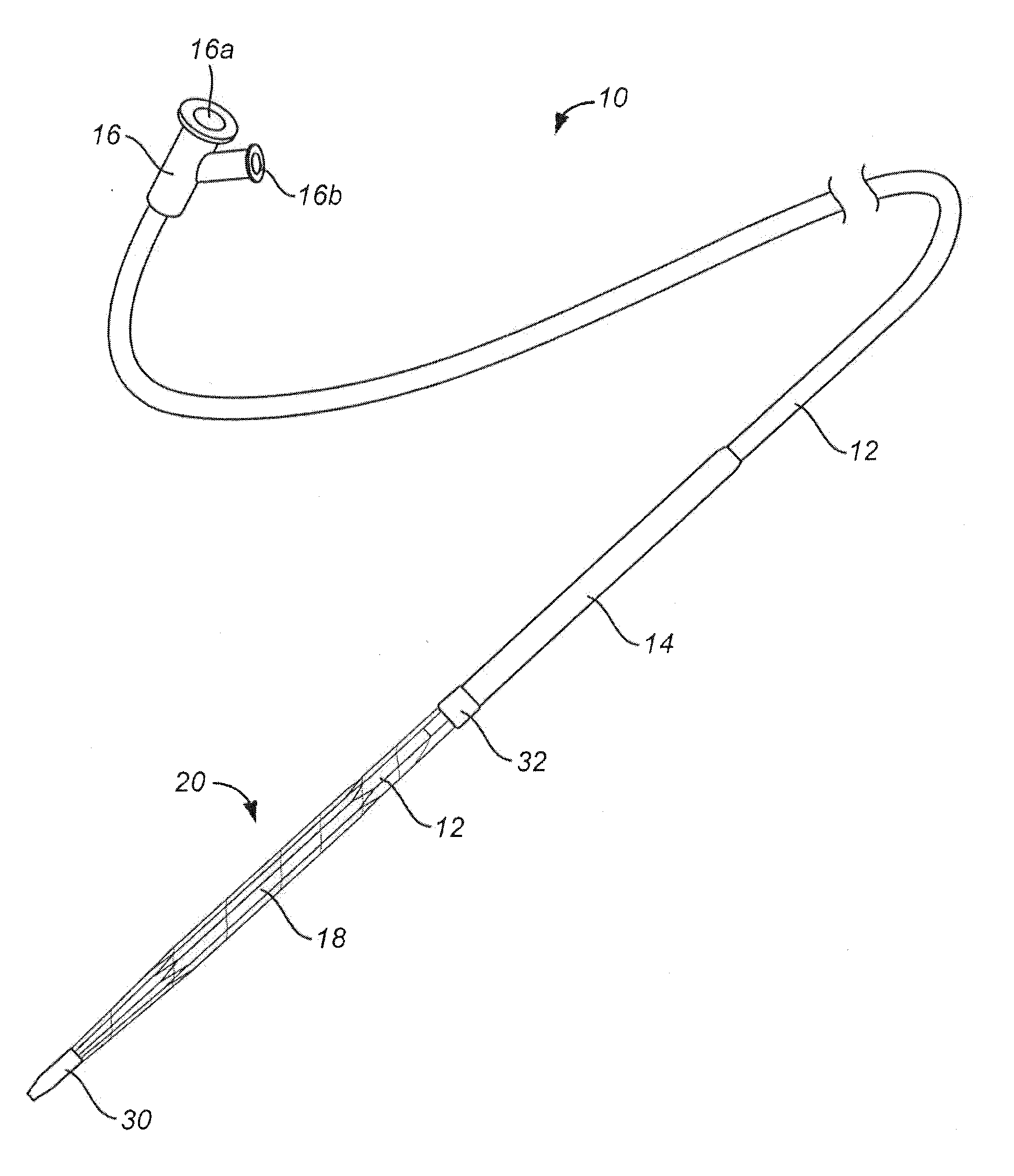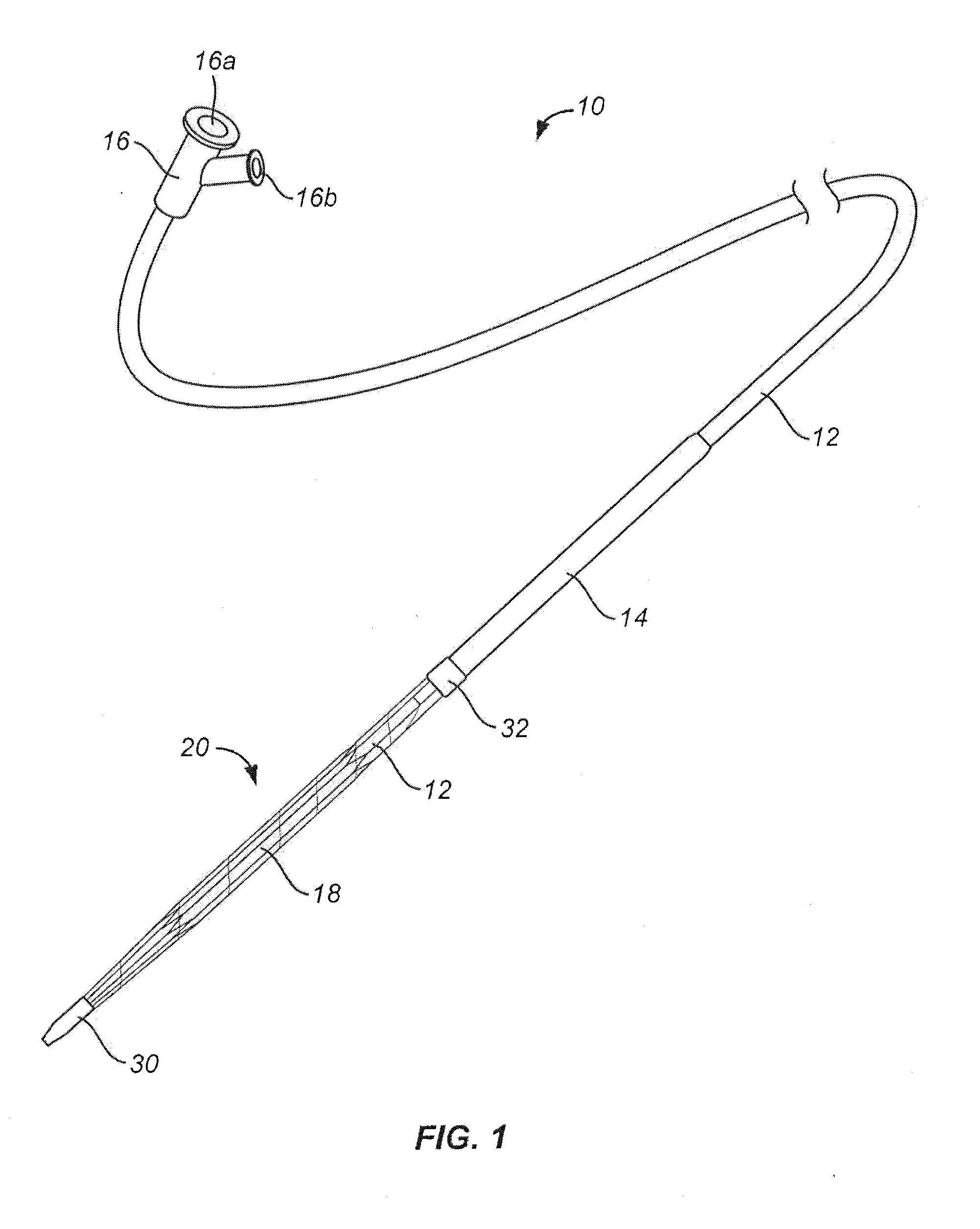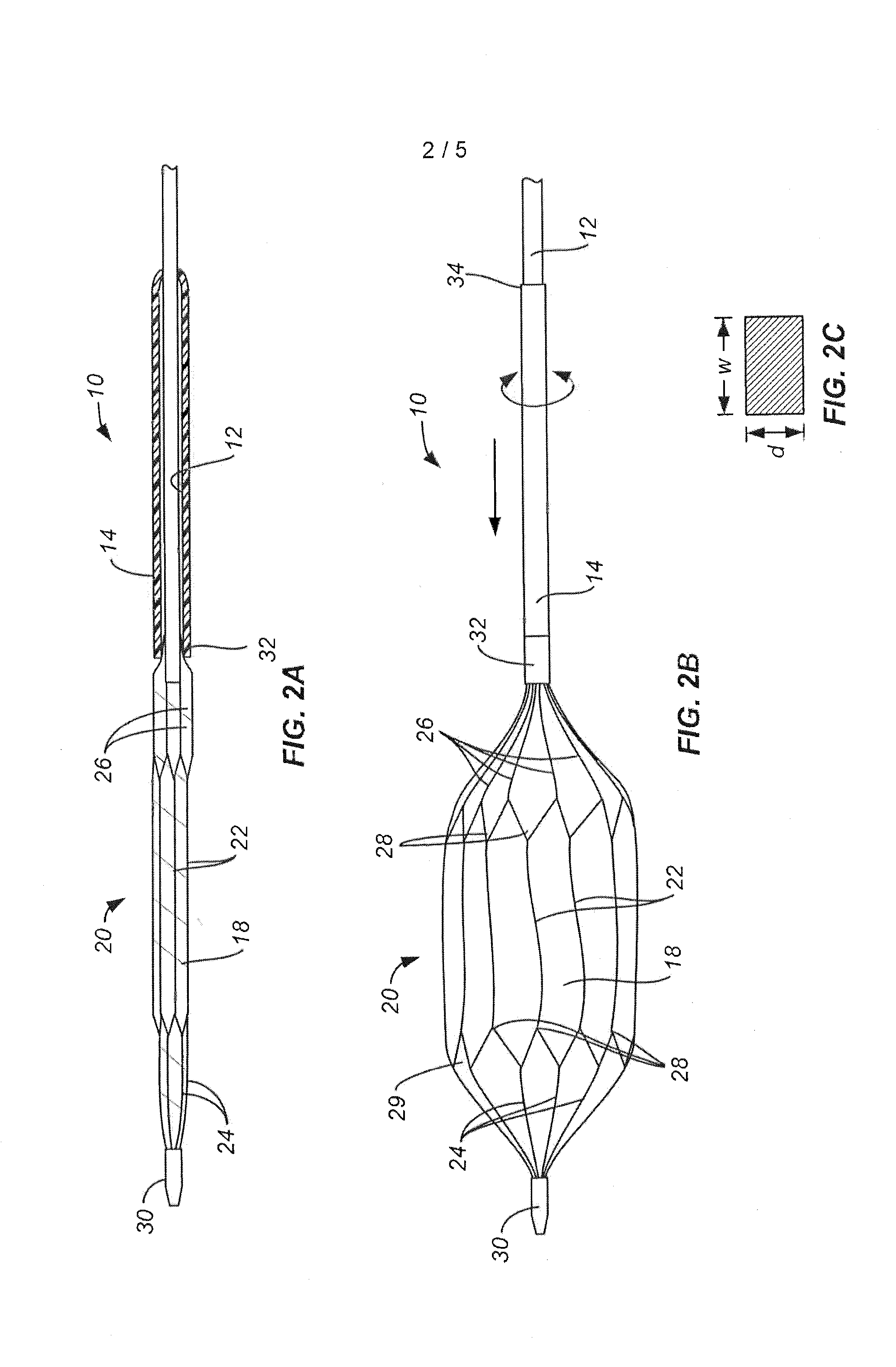Method and system for treating valve stenosis
a valve stenosis and valve leaflet technology, applied in the field of medical devices and methods, can solve the problems of deteriorating valve leaflet function, and achieve the effects of reducing the opening of leaflets available, increasing the area available for blood flow, and reducing the opening of leaflets
- Summary
- Abstract
- Description
- Claims
- Application Information
AI Technical Summary
Benefits of technology
Problems solved by technology
Method used
Image
Examples
Embodiment Construction
[0023]A valvuloplasty catheter 10 constructed in accordance with the principals of the present invention is illustrated in FIGS. 1, 2A, and 2B. The valvuloplasty catheter 10 comprises a shaft 12 having a compliance tube 14 coaxially disposed over a distal portion thereof. A proximal hub 16 includes an axial guide wire port 16a and a side balloon inflation port 16b. The guide wire port 16a attaches to a guide wire lumen which extends axially over the entire length of catheter shaft 12. The balloon inflation port 16b connects to an inflation lumen, typically formed in a wall of the shaft 12.
[0024]An expansible shell 18 is located at the distal end of the catheter shaft 12 and connected to receive inflation medium from the inflation lumen in the shaft which is connected to port 16b. In this way, the balloon can be inflated from a contracted or non-inflated configuration, as shown in FIG. 2A, to a fully inflated configuration, as shown in FIG. 2B.
[0025]An expansible metal cage 20 is mou...
PUM
 Login to View More
Login to View More Abstract
Description
Claims
Application Information
 Login to View More
Login to View More - R&D
- Intellectual Property
- Life Sciences
- Materials
- Tech Scout
- Unparalleled Data Quality
- Higher Quality Content
- 60% Fewer Hallucinations
Browse by: Latest US Patents, China's latest patents, Technical Efficacy Thesaurus, Application Domain, Technology Topic, Popular Technical Reports.
© 2025 PatSnap. All rights reserved.Legal|Privacy policy|Modern Slavery Act Transparency Statement|Sitemap|About US| Contact US: help@patsnap.com



